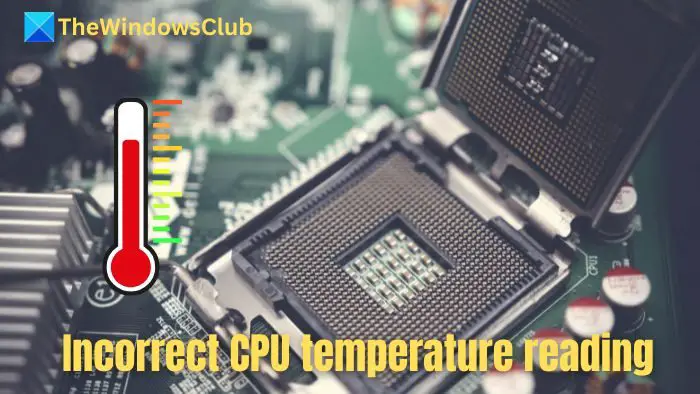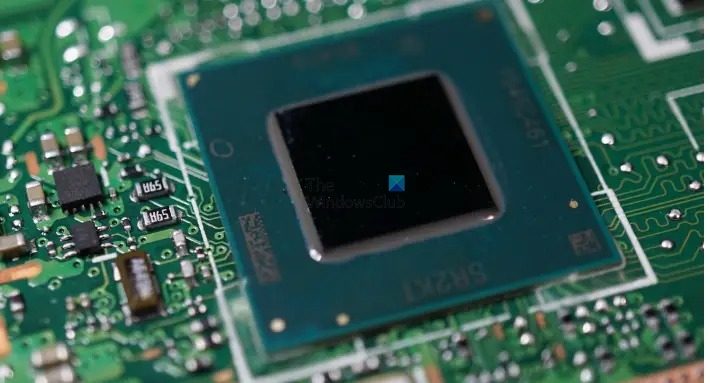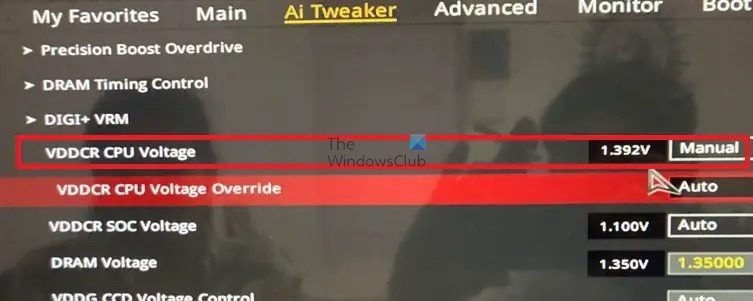If you are a PC user who needs to monitor the temperature constantly and ensure that is not high during intensive processing, then an incorrect CPU temperature reading can create issues. This post looks at possible reasons why the reported temperature could be incorrect.

Why is the CPU giving false temperature readings?
If the CPU temperature being displayed is unusually high or low, various factors might be contributing to the problem, as detailed below:
- Improper CPU overclocking: Overclocking can damage the CPU’s temperature sensor, leading to inconsistent readings and improper recording of CPU temperature.
- Thermal transfer: Thermal paste transfers heat from the CPU core to the heatsink, preventing overheating. However, if not applied correctly or the CPU is seated improperly, air gaps can obstruct heat transfer and cause incorrect temperature readings.
- Damaged CPU Sensors: Temperature sensors on CPUs or thermistors can become unpredictable or stuck at a specific value if damaged, leading to inaccurate temperature recordings.
- Faulty Software Used for Checking Temperature: Several CPU temperature monitoring software are available in the market, but some may not be reliable due to bugs. These bugs can cause incorrect temperature readings, leading to incorrect diagnoses of system problems and damaging the hardware.
Fix Incorrect CPU temperature reading on Windows 11
Various hardware and firmware issues can contribute to the error. Hence, carefully checking and correcting them can help in resolving the issue promptly, which includes:
- Check CPU Sensors
- Check the Heatsink and Reapply the thermal compound.
- Reduce or Adjust CPU Voltage
1] Check CPU sensors

CPU temperature sensors monitor, record, and provide real-time data on the CPU temperature level. Hence, to ensure that the sensors record the correct temperature, they should be in perfect working condition. They are generally located beside the CPU socket, and we can cautiously remove them to check if they are broken or damaged.
Each CPU sensor generally has its physical location and records its readings. Hence, if any air loop is present around the sensors, the readings might be incorrect under its influence. For example, in most cases, the CPU0 sensor continuously records higher temperatures than the CPU1.
2] Check the heatsink and reapply the Thermal compound
Reapplying the thermal compound can help properly transmit heat from the CPU core to the heatsink. Similarly, reattaching the heatsink (a metal component that physically touches the CPU and dissipates heat away from it) can ensure that the temperature stays within the allowed threshold, eliminating the chances of incorrect temperature recording.
3] Reduce or Adjust CPU Voltage

Lowering the CPU Voltage can rule out the possibility of overheating the CPU. If the CPU is recording abnormally high temperatures even after lowering the voltage, it indicates that the sensors are damaged. Hence, voltage adjustments, though not a resolution to the issue in such cases, can help us identify the actual problem quickly.
- Press Del or F2 after powering on the PC to enter the BIOS.
- Check for the CPU Voltage option (this option may vary depending on the manufacturer).
- Check the motherboard manual or the BIOS manufacturer’s website for the permissible voltage reduction limit.
Read: How to undervolt and overclock CPU
How to reset the CPU temperature sensor
Apart from resetting the BIOS to its default settings, the below-mentioned steps can be performed to reset the temperature sensors of the CPU:
- Disconnect the power connection and open the PC cabinet.
- Check for the sensor, which is generally close to the motherboard’s CPU socket.
- Remove the sensor from its socket carefully and use a soft brush to clean it.
- Once cleaned, place it back into its socket.
I hope the post was easy to follow and that you could fix the issue of incorrectly reporting the temperature.
Where are CPU temperature sensors located?
The CPU has a built-in sensor that monitors its temperature. This sensor reports the temperature to the motherboard, which is one of the CPU’s many functions.
What is T sensor on motherboard?
Most motherboards have tiny built-in hardware called T-sensors or motherboard temperature sensors. These sensors act like heat detectors, constantly monitoring critical areas on the motherboard to ensure everything stays cool.
Leave a Reply